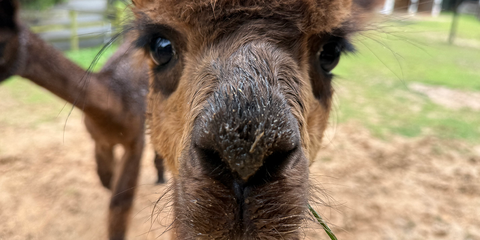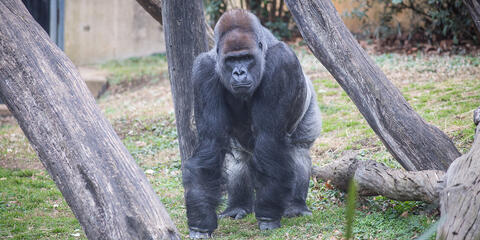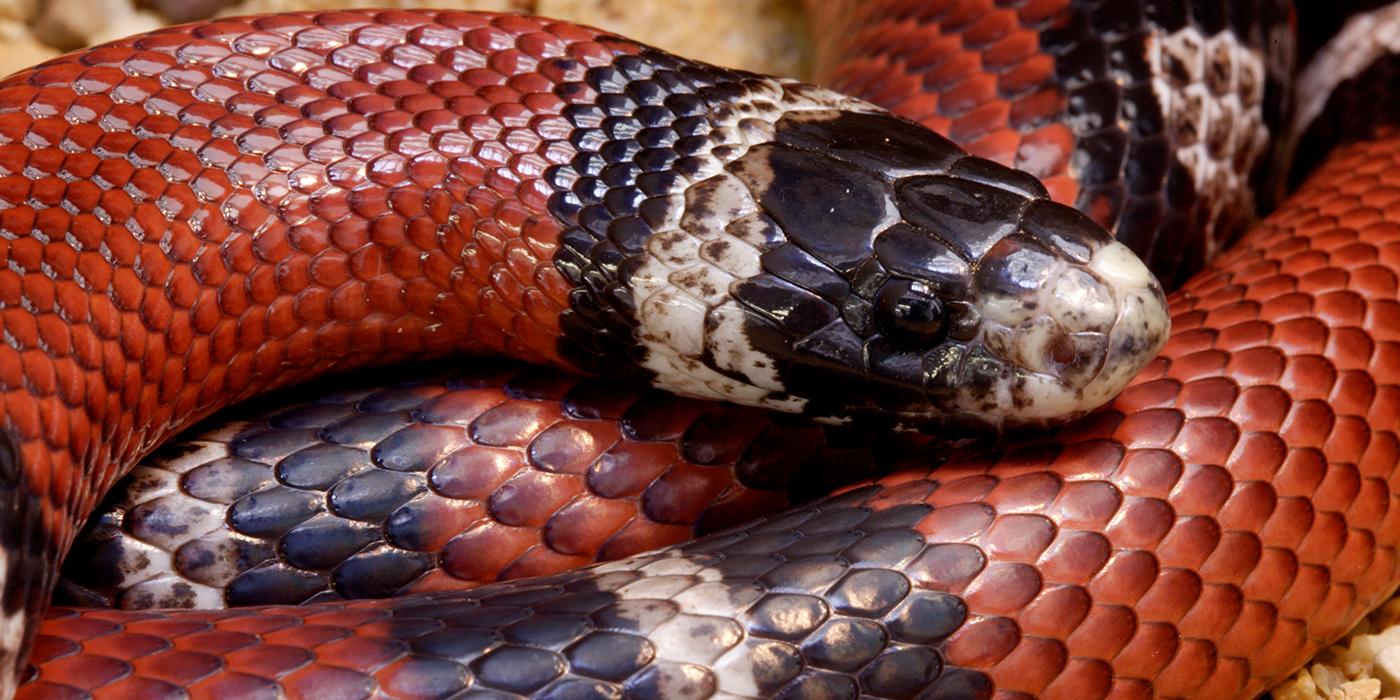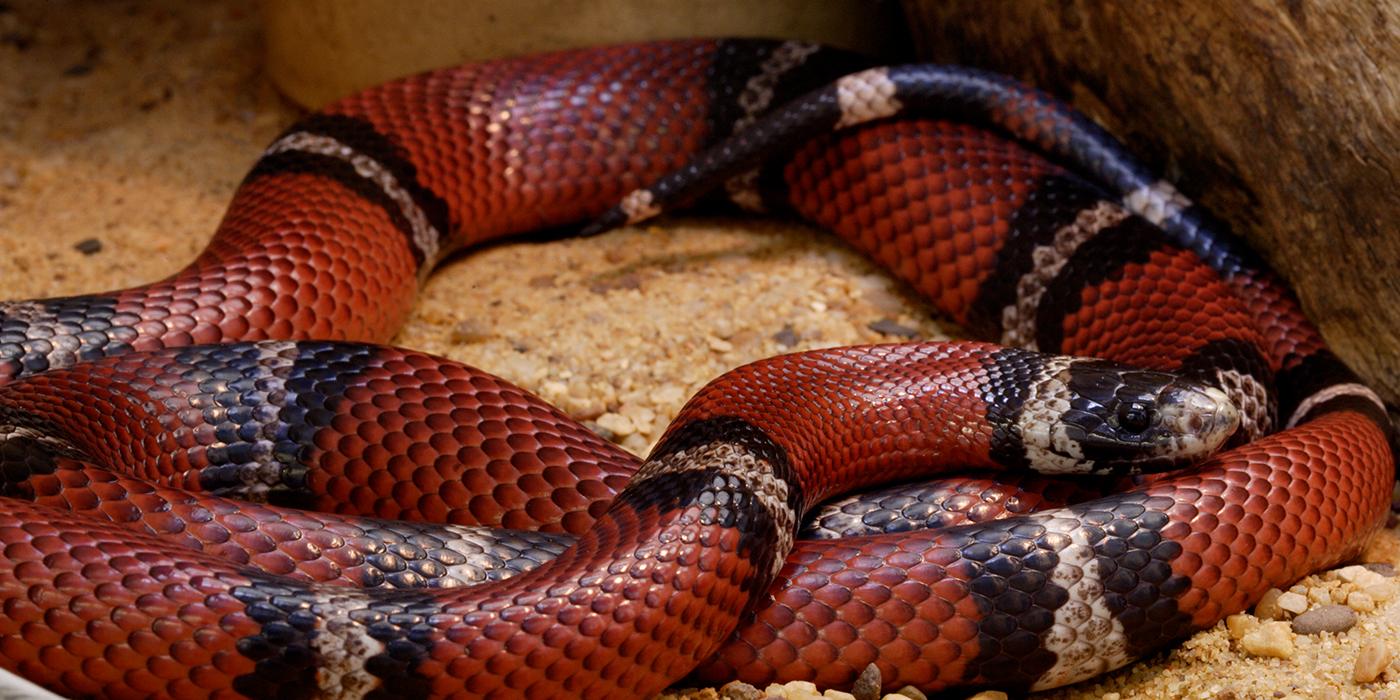Physical Description
There are 25 different subspecies of milk snakes known throughout their geographic range, all with slight color variations. The Sinaloan milk snake has red bands separated by smaller black and yellow bands. Its red brands are broader than those found in other subspecies, though it has similar coloration to the coral snake found in the same area.
The Sinaloan milk snake is not venomous, but its bright colors act as a false advertisement to potential predators. Many milk snake subspecies, including the Sinaloan milk snake, exhibit aposematic mimicry—their color patterns resemble those of the venomous copperhead or coral snake.
The common name, milk snake, originated from a belief that these snakes milked cows. This myth probably began when farmers sought some excuse for why a cow was producing less milk than usual. The snakes, drawn to the mice in the barn, were convenient culprits. Needless to say, milk is not a component of any snake's diet—all snakes are carnivorous.
Milk snakes are a solitary species rarely seen in the open during the day, but they can often be spotted crossing roads at night. They typically stay hidden under rotting logs or damp trash. The only time these snakes are found in groups is during hibernation. Just before and after hibernation, they can be seen together basking in the sun.
When threatened, this snake vibrates its tail creating a sound reminiscent of a rattlesnake. It also discharges a pungent fluid from its cloaca as a warning. These behaviors may deter some predators.
Size
Native Habitat
Lifespan
Food/Eating Habits
Sinaloan milk snakes are opportunistic eaters, consuming anything available, including reptile eggs, lizards, snakes, amphibians, birds and small mammals, such as rodents. These snakes subdue their prey by constriction. Like other king snakes, they have some immunity to the venom of venomous snakes they consume. Common predators of milk snakes include skunks, raccoons, dogs, cats, hawks and owls.
Reproduction and Development
These snakes breed from May to June. They may use chemical cues to during mating season, and they exhibit courtship behaviors. Males contact females with their head, flick their tongues and jerk their bodies to initiate courtship. Where possible, the male will display all of these behaviors in contact with the female but will flick its tongue at the ground if the female has moved away. Then, the male begins to advance onto the female in a dorsal position, as the female jerks forward. After a few minutes, the male will begin to loosely wrap the female to position himself for copulation.
One to 1 1/2 months after mating, the female lays about four to 16 eggs. A second clutch may be produced in as little as 44 days. The eggs incubate for two to 2 1/2 months, and hatchlings emerge measuring 25 to 30 centimeters (10 to 12 inches).
Conservation Efforts
This species is not assessed by the International Union for Conservation of Nature. Milk snakes are common throughout their range and are neither threatened nor endangered. They are sometimes killed by humans, because they are commonly mistaken for venomous snakes. Milk snakes are often found in farmland or urban areas and are beneficial to humans, as they feed on rodents that concentrate around barns or trash.
Help this Species
- If you see a snake in the wild, leave it alone and encourage others to do the same. Don’t assume it is a venomous species, and don’t attack it if it doesn’t pose a threat to your safety. Tell your friends and family about the eco-services that snakes provide, such as keeping rodent populations in check.
- Share the story of this animal with others. Simply raising awareness about this species can contribute to its overall protection.
- Are you a student? Did you love what you learned about this animal? Make it the topic of your next school project, or start a conservation club at your school. You'll learn even more and share the importance of saving species with classmates and teachers, too.
Animal News

Zoo Welcomes Alpacas ‘Rainstorm’ and ‘Coffee Cup’




